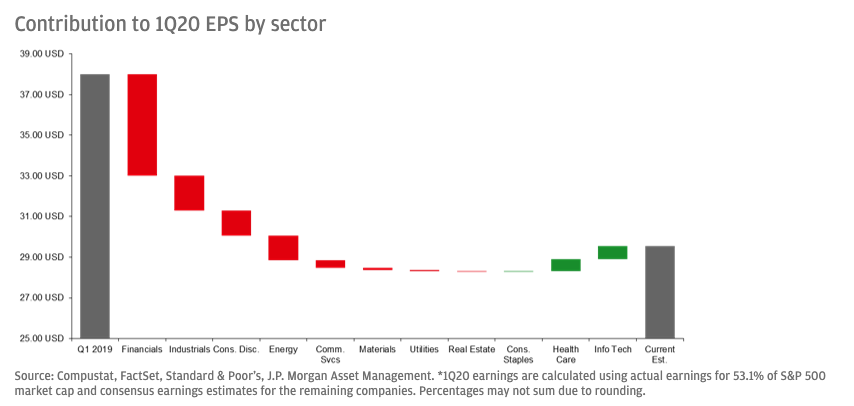Written by: David Lebovitz
Nearly half of S&P 500 companies have reported 1Q20 earnings, and our current estimate is for a -20% decline relative to a year prior. Against this backdrop, however, equity markets have continued trending higher. At the end of the day, the stock market seems to be focused on three things: slower growth in the number of cases of COVID-19, the massive amount of fiscal and monetary stimulus that has been announced in recent weeks and the expectation of a v-shaped recovery in the economy and corporate profits. From our vantage point, the first two drivers of the market rally are fact, but the third seems to be fiction; while we anticipate a recovery into the end of 2020 and beginning of 2021, we do not think it will be as robust as consensus expects.
As such, we remain intensely focused on what is happening with corporate profits, as over the long-run, earnings are the main driver of equity returns. Corporate managements continue to pull 2020 guidance, but some of the trends that have emerged during the first quarter earnings season, thus far, can be helpful in building expectations for how things may evolve during the rest of the year. In general, this earnings season has been about the good, the bad and the ugly.
- The good: the health care sector has seen solid demand for over-the-counter pharmaceuticals and branded drugs, although medical device sales have been disappointing. In consumer staples, strength has been concentrated in food products that are consumed at home, as well as household items; perhaps unsurprisingly, food that is consumed away from home has been a headwind, as has a stronger U.S. dollar. Finally, technology and communications services companies are seeing strength in hardware, software and content that can be consumed at home, but advertising revenue is down.
- The bad: financial service company earnings have been weak, as rising loan loss provisions have offset solid capital markets activity. The big question going forward will be whether an uptick in loan volumes is able to offset lower net interest income. In the materials space, a decline in transportation and travel has led to a softening in demand for many products.
- The ugly: industrials and energy are in bad shape, with the industrial sector struggling due to the impact of stay at home orders on the airlines, as well as an overall decline in shipping activity. Meanwhile, lower oil prices are impacting energy sector revenues, and forcing companies to take impairment charges on their oil field assets.
As such, we continue to advocate for a focus on quality with a dash of cyclicality. This means embracing sectors like health care, technology and consumer staples, and taking advantage of underweights in highly-levered sectors like energy and REITs to maintain benchmark exposure to sectors like financials. This should allow portfolios to weather the storm in the short/medium term, while simultaneously maintaining enough cyclicality to participate when markets do rally.



